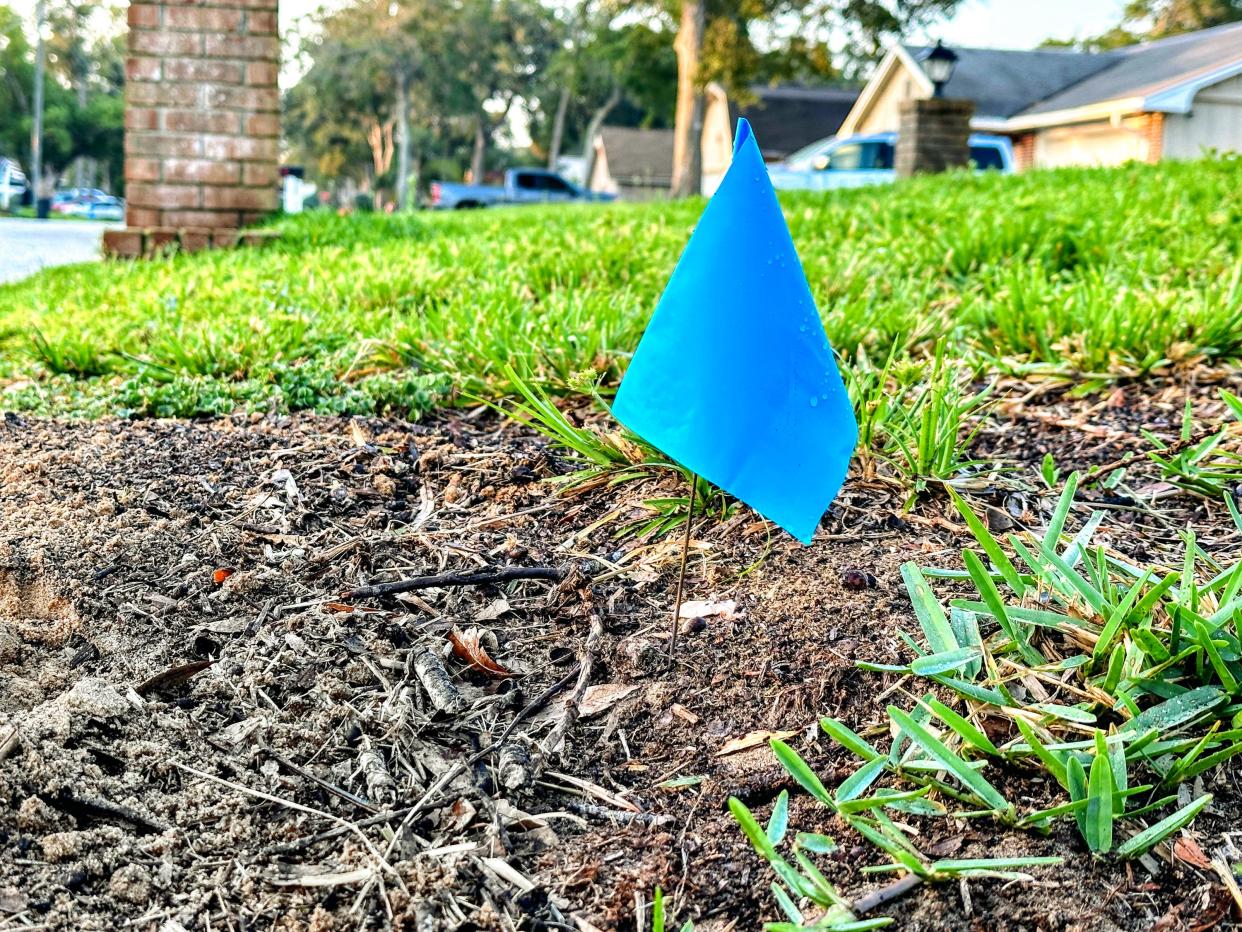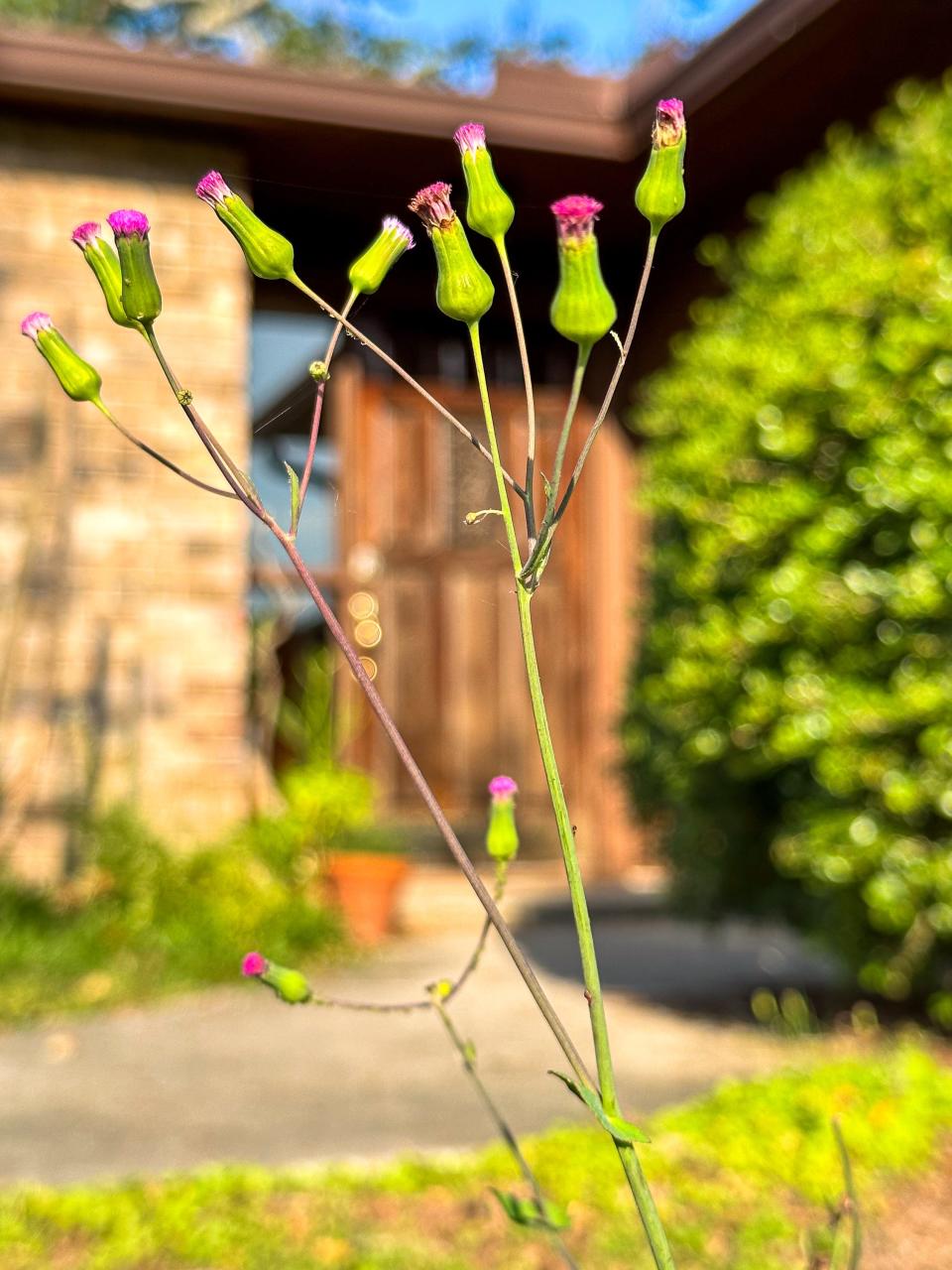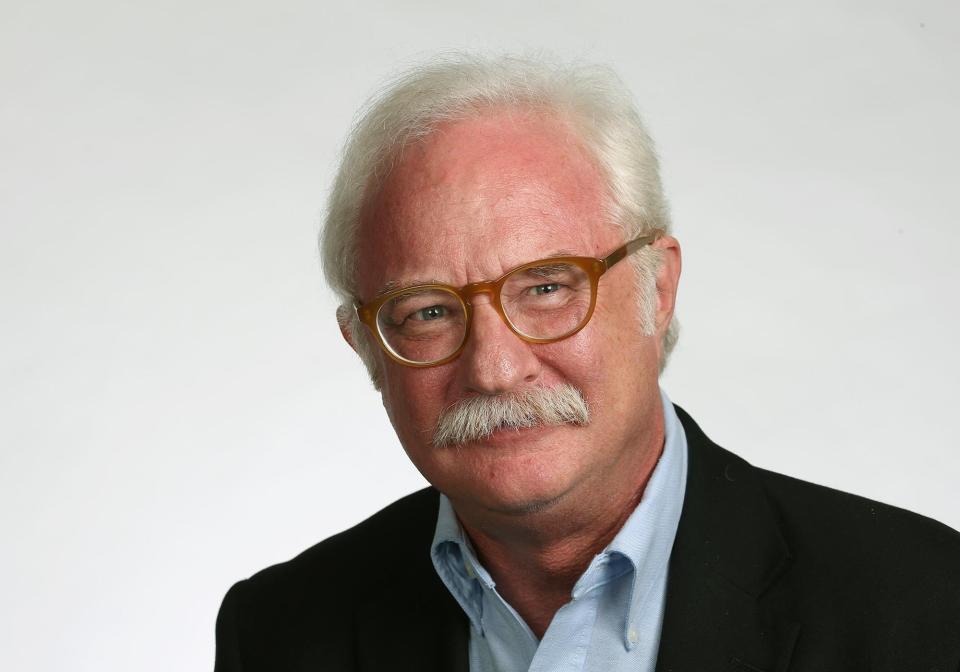Mark Lane: The Darwinian Gardener gets uptight when little flags sprout

Keen observer of nature that he is, the Darwinian Gardener always notices when new things sprout in his yard. And this time, he did not like what he was seeing.
But wait. “Who is this Darwinian Gardener?” you may ask. “What’s his deal?” you may wonder.
The Darwinian Gardener is Florida’s foremost exponent of survival-of-the-fittest lawn-and-garden care. His yard is not a chemistry experiment being undertaken to find the best home approximation of a Midwestern golf green. No, sir.
He does not presume to be nature’s quality assurance team. He thinks of himself more as nature’s night-shift janitor. Just there to sweep up after any damage, empty the trash, and leave a sticky note to let the day shift know about any property damage.
And May, before the full heat of summer drives him back inside, is a good month for home horticulturalists to Ask the Darwinian Gardener:
Q: What did you see sprouting? The same air potato vines that defeat you every summer?
A: While the first air potato vines did emerge despite his best efforts at locating and tossing the misshapen seed-like things that give it its name, the more troublesome sprouts were of a man-made nature: little flags in the right-of-way of his front yard. Orange flags that indicate where cables lie, blue flags that show water lines, and green flags that show sewer lines. His yard is quite the crossroads of underground utilities.
Whenever little flags sprout in his yard ― especially orange ones ― he knows his connection to the Internet may soon be sliced off for days or weeks while he waits for a cable repair guy. This happens surprisingly often.
Because he is a Modern Guy and part of the work-from-home economy, this cut-off will send him scurrying to libraries, coffee shops and burger places where, laptop in tow, he will hunt for friendly Wi-Fi signals. He sees a lot of burgers and coffee in his near-term future.
The last time this many flags appeared, city workers dug a 4-foot-deep, 5-foot-wide pit in his front yard, ringed with yellow caution tape. It was such a good pit that they decided to keep it like that for a month. Presumably, so people could visit and admire it.
When the city contractors finally did cover it, they plopped a few squares of sod over the work site, grass that somehow survives to this day. A nice side benefit. Nothing much grew there before.
Q: I see the Florida Legislature is again allowing freedom-loving Floridians to coat their yards in phosphorus during the summer. No more fertilizer bans! What do you say to that, lawn-hippy?
A: The Darwinian Gardener does not believe mere sod deserves coddling, watering and feeding. That’s for potted plants only. He hasn’t used lawn fertilizer since his dial-up AOL account lapsed.
In 2014, he cheered the Volusia County Council for enacting a county ordinance banning most dumping of nitrogen and phosphorous fertilizers on lawns from June 1 through September 30, Florida’s rainy season. These are months when a lot of those lawn chemicals wash out to storm sewers, swales, rivers, and lakes where they encourage algae blooms, red tide and fish kills.
But the Florida Legislature, always ready to overrule local governments whenever a lobbyist drops by for a friendly visit, voted to restrict such ordinances. This measure got folded into the budget in the last days of the session before zooming down the legislative log flume. The measure also throws some money at more studies as though we haven’t yet figured out that fertilizer pollution is a thing.
It does not, however, repeal existing bans. It just keeps more local governments from enacting sensible measures like these. Unless the governor cuts the line item from the budget, which seems unlikely, look for it to turn into a hard prohibition next session.
Q: Are you celebrating No-Mow May?

A: No-Mow May encourages homeowners to pause mowing for a month to let wildflowers bloom and thus help pollinators like bees. The Darwinian Gardener does not need much encouragement to do less yard work. He already celebrated No-Mow March and No-Mow April but did indulge in a bit of mowing in May, not so much for the grass but to make the sedges look more like patches of grass.
Still, he gives wildflowers like lilac tasselflower a fighting chance throughout spring and keeps his grass on the shaggy side year-round.
It’s the comb-over principle: There are a lot of bald spots on his grounds, and longer grass and wildflowers hide them. Kind of.
Mark Lane is a News-Journal columnist. His email is mlanewrites@gmail.com.

This article originally appeared on The Daytona Beach News-Journal: Mark Lane: Flags sprout and the Darwinian Gardener is not happy

